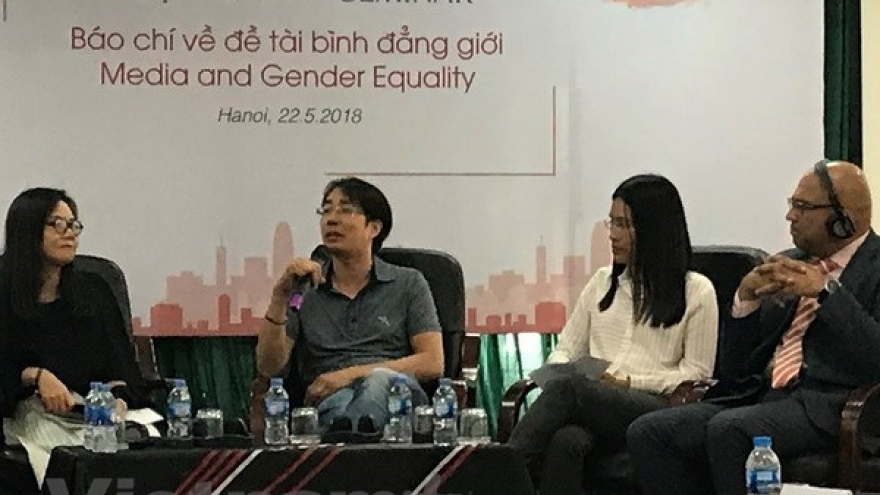Sustainable development associated with gender equality
VOV.VN - Ensuring gender equality and narrowing inequality are included in the 17 Sustainable Development Goals (SDGs) of the UN 2030 Agenda, agreed upon by leaders of the 193 UN member states in 2015 aiming to deal with the challenges of comprehensive socio-economic development and assure environmental sustainability and good governance.
 |
These are considered solid guidelines for the Vietnamese business community to embark on their journey at a national level.
According to the UN 2030 Agenda, the Government is responsible for providing guidelines by devising concrete national plans to create a favourable environment for each citizen to learn about the importance of the agenda.
Women's share of the labour force now more than 48%
Businesses have played an indispensable role in achieving SDGs. The successful implementation of SDGs will help businesses create a more favourable environment for their operations and conquer the global market. The behaviour of enterprises has been key to the success of each goal through responsible business activities, including the responsibility for ensuring gender equality and reducing inequality.
Recent research by McKinsey has found that companies which embrace gender diversity can perform their activities 15% better than their competitors.
A common report of Intel and Dahlberg has shown that technological companies with at least one female leader have a business value of 13%-16% higher than those with male leaders.
Furthermore, a survey conducted by First Round Capital has indicated that their investments in companies whose founders are female have reaped 63% better rewards than their investments in firms whose founders are male.
Vietnam has introduced the issue of gender equality in the workplace and consider it as one of the major focuses for the country’s socio-economic progress. Therefore, women have made certain achievements in gender equality, especially in education and health.
According to the General Statistics Office (GSO), in 2017 the share of leadership roles occupied by women had risen to 28%, which is higher than the world average of 19% and higher than the average of Organisation for Economic Co-operation and Development (OECD) nations.
The rate at which women are participating in the workforce in Vietnam is relatively high, with up to 72% of the country’s total female population working and accounting for 48.1% of the labour force.
According to the report ‘World Employment and Social Outlook: Trends for Women 2018’ released by the International Labour Organization (ILO), Vietnam is among the nations with the highest rate of women in the workforce and that this greatly contributes to the country’s economic development.
However, female workers face a number of hurdles in their employment and incomes. The report has shown that although female workers make up 48.4% of the total workforce in Vietnam, the rate of employment for women is 9% lower than for men.
At present, about 7.8 million of all female workers are working in unofficial sectors with insalubrious working conditions. The rate of female workers operating in the unofficial sector with substandard conditions makes up 59.6% while this rate is only 31.8% for men.
In another area of disparity, the monthly income for male workers is 10.7% higher than for women (VND5.3 million compared to VND4.7 million).
Challenges for gender quality in Vietnam
Director of the ILO Research Department Damian Grimshaw affirmed that challenges and barriers to women’s full and free participation in the workforce will restrict Vietnam’s ability to realise its economic growth roadmap along with social development.
The ILO representative said the UN Agenda 2030 with 17 SDGs including gender equality is obviously a call to businesses to sustain their efforts during the journey of advancing toward a global economy of equity, sustainability and integration.
The fulfillment of SDGs in the 2015-2030 period is needed for Vietnam to realise its aspiration for a new level of prosperity, innovation, equity and democracy by 2035.
The promotion of gender equality in the workplace applies to the use and development of human resources, which will directly impact labour productivity, and the efficiency of enterprises.
By boosting the operational productivity of enterprises, the promotion of gender equality is regarded a strategic investment which delivers sustainable growth and development.


